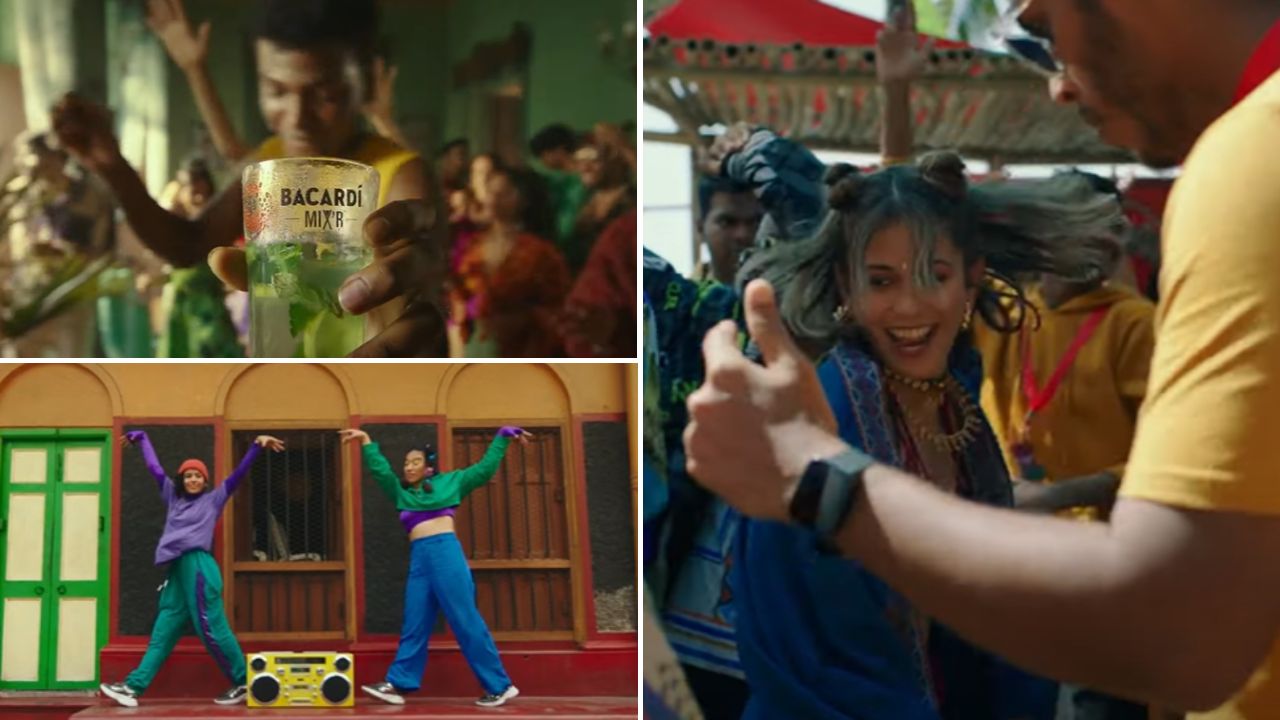After nearly two decades in the country, Bacardi has launched its debut India-specific campaign. This year-long initiative aims to cater to localised markets across India. In an exclusive interview with Storyboard18, Zeenah Vilcassim, marketing director of Bacardi India, sheds light on the significance of India as a market, their target to touch 6X business by 2030 and more. Edited excerpts:
After two decades of being in the country this is your first campaign for the market. Tell us more about it.
Bacardi has launched a year-long campaign in India, aiming to connect with the diverse and dynamic Indian consumer market. Recognising the need to understand the nuances of Indian consumers, Bacardi conducted extensive market research to resonate with the target audience and tap into the country’s culture.
The campaign focuses on Bacardi mixers, emphasising the brand’s global positioning of ’Do what moves you’. The ‘ItsAMood campaign’ campaign showcases local culture in various Indian cities through TV commercials, digital platforms, influencer collaborations and experiential events. By leveraging ATL (above the line) media, including TV, cinema and out-of-home advertising, Bacardi aims to reach a wide audience and celebrate the unique moments that resonate with consumers.
Throughout the year, the campaign will feature brand collaborations, engaging local influencers as ‘mood setters’ and exploring the distinct cultural elements of each Indian city. Bacardi’s commitment to understanding and connecting with the Indian consumer market underscores its strategy to grow its business by 6X in India by 2030.
How important is India as a market in the global scheme of things for the brand?
When we set our global strategy in 2018, Bacardi identified five key emerging markets that would drive most of its global growth. These markets were India, Mexico, South Africa, China and Russia. India was the top market, with a dynamic consumer market and a diverse and unique culture. Bacardi has been in India for two decades and has a strong relationship with the country. The company’s goal for India was grow its business by 6x by 2030.
Actually the goal was originally to touch 5X by 2030 but the trajectory that we’re going on, it’s now 6x, by 2030.
Any reason you launched the campaign now? And what is the media mix you’d be using to amplify the campaign?
With the launch of mixers last year and the research and connections all set in place, we had all the right elements and global backing and support to do something really local that resonated with consumers and one that would last for the whole year as well. Everything put together, it was the perfect time to launch our first local campaign for Bacardi.
As for the media mix, we are using a combination of digital, social, OTT, cinema, experiential, influencer and TV channels to reach 75 percent of our target audience.
The TV ads will be national, but the digital, social and influencer ads will be localised to each city. This is because we believe that local influencers are the most authentic voices for their city, and people resonate with them. We will also be taking the campaign through the line, meaning that we will be using the same mood and messaging in our food, bars and experiential events. We believe that this approach will give us the most traction across all channels.
What about your marketing spends, are they going up with the new campaign?
Bacardi is investing heavily in marketing this year, but it is similar to what we have been spending. However, the company is increasing its media spend by 50 percent, and is integrating its marketing messages across all channels. This includes TV, digital, social and experiential marketing. We are making our money work harder for us in that way.
Surrogate advertising is still a grey area in the country- What is the brand’s take on it?
Bacardi does not engage in surrogate advertising. Instead, the company focuses on brand extensions that are separate from its alcohol products. For example, Bacardi Experiences offers a variety of experiences, such as concerts, festivals and parties. Then there are Bacardi Mixers that are a non-alcoholic mixer made with all-natural ingredients. These brand extensions allow Bacardi to bring to life the ethos of the company, which is all about experience, fun and culture.
A lot has changed for marketers post the pandemic in terms of strategy and also trends. What are your observations?
From a marketing standpoint, the pandemic saw a surge in virtual events. However, this trend has since slowed down as people have become fatigued with virtual experiences. Instead, there has been a resurgence in live experiences, as people are looking for ways to connect with others in person. This trend is particularly strong in India, where the EY Future Consumer Index found that consumers are willing to spend 31 percent of their net income on experiences.
In addition to the move towards live experiences, the pandemic has also seen a trend towards premiumisation. Consumers are becoming more discerning about the products they buy, and they are willing to pay more for quality. This trend is evident in the food and beverage industry, where consumers are increasingly interested in trying new and innovative flavours.
Overall, the pandemic has had a significant impact on marketing trends. Virtual events have given way to live experiences, and premiumisation has become increasingly important. These trends are likely to continue in the post-pandemic world, as consumers continue to seek out new and exciting ways to connect with brands.
